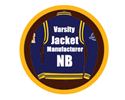Luminous printing process
Luminous printing, its cool effect is obvious to all, so many people will want to customize this effect.
Learn more about the luminous printing process.
The most intuitive point is that luminous printing is only suitable for large-area overall patterns, or to teach thick line patterns. Due to the limitation of material characteristics, in order to achieve a good effect of the finished product, you can only choose a screen with a mesh not too high for printing.
At the same time, in order to ensure that the final customized sweater pattern has good fabric adhesion, it is usually necessary to add a certain proportion of water or emulsifier to the printing paste for adjustment. Therefore, for your carefully designed pattern, it will not be washed twice. Don’t complain about the fact that the manufacturer is fooling you because you didn’t use pure luminous paste.
Some people will pursue the richness and variety of patterns, but this must be restrained in the luminous printing. When the luminous paste is mixed with other pastes, the luminous effect will not be produced at the superimposed area. Therefore, if it must be mixed, it must be ensured that the luminous paint is printed as the last layer of paint. At the same time, multi-layer printing affects the thickness of the printing and thus the feel, so although the pattern of the pattern can be complicated, it should not be too complicated.
In theory, the brightness of luminous printing is the highest when the substrate is light-colored and white, and can reach a brightness of 80 to 100.
But if you are a friend who likes black and dark sweaters, don’t worry too much. The shirts will be customized before the luminous paint. A layer of white printing paste will be printed on the sweater, and then the luminous paint will be printed. The brightness of the luminous printing on the dark sweater can be guaranteed.












